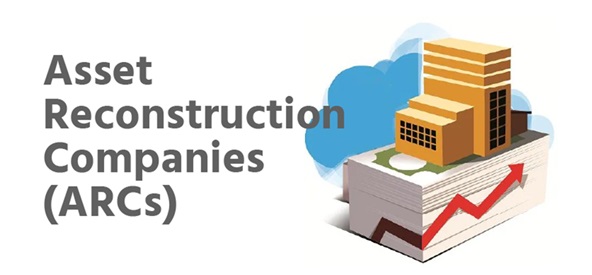India’s financial sector has seen rapid evolution, with Non-Banking Financial Companies (NBFCs) and Asset Reconstruction Companies (ARCs) playing distinct yet complementary roles. While NBFCs provide credit and financial services to individuals and businesses, ARCs focus on resolving stressed assets in the banking ecosystem. Both operate under the regulatory purview of the Reserve Bank of India (RBI), but their functions, licensing requirements, and compliance obligations differ significantly.
Just as businesses rely on structured processes like NBFC Registration in India or applying for an NBFC License in India, ARCs too must meet strict RBI norms before commencing operations. Understanding these differences is critical for entrepreneurs, investors, and financial consultants.
What is an NBFC?
An NBFC (Non-Banking Financial Company) provides financial services such as loans, asset financing, microfinance, leasing, and investments. Unlike banks, NBFCs cannot accept demand deposits, but they bridge the credit gap for underserved sectors.
- To start an NBFC, entities must undergo NBFC Registration online in India or Online NBFC Registration in India.
- They must secure an NBFC license from RBI in India, ensuring compliance with minimum net owned funds, governance standards, and prudential norms.
- Many entrepreneurs prefer working with an NBFC Registration Consultant in India or NBFC registration consultant to simplify the process.
The availability of NBFC license online application systems has made it easier for businesses to enter this regulated space.
What is an ARC?
An Asset Reconstruction Company (ARC) specializes in acquiring non-performing assets (NPAs) from banks and financial institutions. By restructuring or recovering these stressed assets, ARCs help clean up balance sheets and revive credit flow in the economy.
Unlike NBFCs that focus on credit delivery, ARCs function as resolution entities under the Securitisation and Reconstruction of Financial Assets and Enforcement of Security Interest (SARFAESI) Act. They are also regulated by RBI but follow a separate licensing and compliance process.
Regulatory Framework: NBFCs vs. ARCs
- Licensing
- NBFCs: Require an NBFC License in India issued by RBI after completing NBFC Registration in India.
- ARCs: Need approval under the SARFAESI Act and must maintain a minimum capital adequacy ratio.
- Scope of Activities
- NBFCs: Offer financial products like loans, leasing, and investments.
- ARCs: Focus on purchasing, restructuring, and recovering bad loans.
- Compliance Requirements
- NBFCs: Must adhere to RBI’s prudential norms, capital requirements, and regular filings.
- ARCs: Must follow RBI’s guidelines on asset classification, provisioning, and recovery.
- Target Market
- NBFCs: Cater to individuals, SMEs, and businesses needing financial support.
- ARCs: Primarily interact with banks and financial institutions offloading NPAs.
Why Entrepreneurs Should Consider NBFCs
For entrepreneurs, NBFCs offer broader opportunities in consumer and business lending. With increasing digital adoption, applying for NBFC registration online or an NBFC license online has become straightforward. Partnering with an NBFC registration consultant ensures smooth compliance and faster approval of the NBFC license from RBI in India.
Final Thoughts
While NBFCs and ARCs both play critical roles in India’s financial ecosystem, their business models and regulatory frameworks are very different. NBFC Registration in India enables companies to participate in credit delivery and financial inclusion, whereas ARCs focus on resolving stressed assets and maintaining banking stability.
For those exploring new ventures in financial services, obtaining an NBFC License in India through Online NBFC Registration in India—with guidance from an experienced NBFC Registration Consultant in India—remains a profitable and impactful choice.

